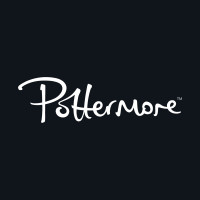
At the start of the twentieth century, women were trussed tightly in corsets and shoe-skimming skirts, their hair arranged smartly in buns and their neat collars secured with prim cameo necklaces – a look designed to suggest sobriety and propriety.
Men wore heavy suits, top hats and straitlaced jackets with tails – changing several times a day according to strict etiquette, and always topping outfits with a silk tie.
By 1920, after the First World War, American women had not only secured the vote, they were now experimenting with wearing the trousers outside the ballot box.
Meanwhile, men had begun wearing shorts, and flirting with brightly-coloured shoes and flash bow ties. Post-war euphoria unleashed a new spirit of frivolity, and derring-do seized the nation and its wardrobes. Women lopped off their hair into sharp little bobs, then sported cute cloche hats, all the better to see them with. They acquired fabulous fur coats, to keep themselves cosy while travelling in newly-minted automobiles.

The war had brought about a blurring of class distinctions, and it was now a case of young against old, rather than rich versus poor, with a modern new look designed almost expressly to illicit disapproval from the old school. Over at Oxford University, male students were so irked when forbidden to wear knickerbockers on campus, they started sporting extravagantly voluminous trousers in revenge – kicking off a cross-Atlantic trend for ‘Oxford baggies’ – slouchy strides worn in the spirit of rebellion.
Yes, young men were loosening up, and took their sartorial leads, much as they do today, from sportsmen. Plus-fours (as well as plus-sixes and plus-eights – the number denotes the number of inches a trouser hem fell below the knee) were nabbed from golfing garb, and cable knit sweaters from the cricketer’s closet.

Prominent sportsmen became admired for their style off the pitch too – one Red Grange, a superstar American footballer, managed to make full length raccoon and camel hair coats all the rage when he took to wearing them.
Meanwhile, one woman can take the credit for much of the evolution in women’s style during the decade, which continues to dictate how modern women dress today. Coco Chanel opened up a considerably ahead-of-its-time boutique in 1921 in Paris – up until this point, women’s clothes were made-to-order, rather than bought, and sold boyish, laid back ensembles – trousers, sailor tops, knitwear. Her Garçonne look was embraced by rebellious young things in the States.
Chanel, whose designs were quickly emulated across fashionable society, liberated women from the constraints of prim dressing – ‘Luxury must be comfortable,’ she said. ‘Otherwise, it is not luxury.’ So next time you wear a tracksuit, you can say you’re invoking Chanel.
In the cool new school of louche ladylike, gone were the high waistbands, dropped to a swishable hip. Necklaces swung long and loose, and shoulders were warmed with a pioneering new design – the cardigan – invented by another French designer Jean Patou, inspired by military knitwear. And by 1926, Chanel had given women worldwide the gift of the LBD – the little black dress which is always the right thing to wear, whatever the occasion. Merci!
When not dressing like boys, women were having rather a lot of fun with their outfits. The flapper look which has come to define the style of the decade was so-called because its loose cut dresses did just that – flapping out flirtily from the bust and allowing wearers to kick their heels up to the sparky, speedy new jazz which sound-tracked the era, and the Charleston dance which was a craze at speakeasies across America.
The discovery of Tutankhamun’s tomb in 1922 kick-started a huge Egyptian trend, with jewelled embellishments, chevron motifs and scarab brooches giving evening gowns extra sparkle. Hemlines rose from the ankle to the knee – meaning a new emphasis on silk stockings. With calves now fully on show, there was no getting away with sub-standard hosiery.
Just as women began to take care of their newly exposed pins, men were experimenting with their own hosiery repertoire – trouser hems were now worn a shade above the ankle, or swapped for a pair of pluses, allowing for a flash of carefully chosen sock in a bright hue or a dandyish Argyle when mid-dance.
If fashion itself had become a little laissez-faire, any time saved on grooming was now directed upwards, thanks to Hollywood. Until the 1920s, make up had been the preserve of ‘ladies of the night’. Now girls wanted to look like exquisitely made-up screen sirens like Greta Garbo, Joan Crawford and Clara Bow – whose famous Cupid’s bow lip was achieved with the first specially shaped lipstick by Helena Rubenstein. Women across America began to defy convention and wear lipstick and rouge - oddly, the latter to knees as well as cheeks.

While fashion is constantly evolving, it’s hard to think of a decade that saw such a revolution in style in such a short time – in just 10 years, the fashionable had gone from dressing like the austere Victoria and Albert to wearing bobs, lippy and raccoon coats. So gents, if you’re reading this while sporting a scarlet sock or perhaps a full length fur; women, if you’ve dropped your corset in favour of a cardigan, and your hair is cut above the waist, know that you have the mischievous, adventurous dressers of the 1920s to thank for your attire.

